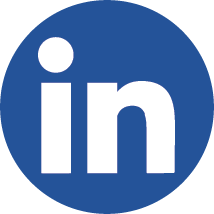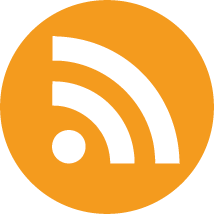President’s Memo: In Praise of the Wise Fool
SHARE:

Over the last couple of months, people have asked me how I’m feeling about “year one” drawing to a close. It’s a question that initially took me aback because sitting down to write my inaugural column as CEO last August seems both far away and as if I just typed in the last period. Nevertheless, here we are, about to step into—as someone joked with me—“sophomore year.”
When my eldest son became a high school sophomore, I remember learning about the Greek root of the word: sophos meaning “wise” and moros meaning “foolish.” In other words: the wise fool. Which is apt, isn’t it? A sophomore no longer has the naïveté of that first year; he or she has accumulated a meaningful amount of insight. But the risk—as any parent of a sophomore will tell you—is that in the rush of confidence a little knowledge carries, we human beings can assume there’s not much more to learn. When one hears about an artist’s proverbial “sophomore slump,” for example, it’s often because that individual has made a too-quick progression from humility to hubris.
What’s interesting to me, though, is how wisdom can work the other way, too: By holding onto our naïveté, if you will—embracing the curiosity a certain freshness invites—we also invite wisdom. As it happens, one wisdom I was recently led to came just a few weeks ago—as I was meeting with my counterparts at the AICPA to discuss the agenda for our semiannual NASBA-AICPA Summit.
Some of you reading this may not know that the executive staff and volunteer leadership at NASBA and the AICPA convene twice a year to discuss the pressing issues in accounting. The Summit is an opportunity to locate the places where NASBA and the AICPA might collaborate for the sake of the profession and public protection—and to discern how that collaboration might happen. It’s a time designed to pull us from the trenches in order to see the broader landscape. And it’s important as far as keeping each side in touch with a futurism that helps us anticipate issues and enhance the work each organization does on behalf of our memberships. That work is at its best only when the perspectives of both the profession and the regulator are brought equally to bear.
And yet, sitting in that meeting, a problem with the above occurred to me. The hint is in the first line of the prior paragraph: Some of you reading this may not know…
Over my first year, and thanks in part to the Diagnostic project NASBA is undertaking, one thing that’s becoming clear to me is that at times NASBA can be perceived as a bit opaque. That some of our ideas or decisions may happen behind closed doors, and because of that they don’t always tap the expertise, insights, or recommendations of our members that would make those ideas or decisions more sharply informed, and their outcomes more relevant. In consequence, the announcements and news, which may emerge from these activities, can then appear to come out of the blue, or to come across as highhanded—which in turn makes the projects they refer to easily misunderstood, even suspect. All of which contributes to a wariness. In the case of the Summit, that wariness manifests, first, in a belief that NASBA may be too close to the profession, and second, that we may be more interested in supporting the AICPA’s agenda rather than acting as an equal partner and bringing our members’ perspectives to these vital engagements. As I left the room where the Summit agenda was itself on the agenda, here was the wisdom that hit me: This is a prime example of how such impressions form, I thought, of how such perceptions harden.
As far as I’m aware, developing the Summit agenda in the past largely took place between NASBA’s and the AICPA’s respective leaderships. It was shared internally at NASBA but not externally with you, our members, and not proactively—in the sense of reaching out to learn what you may want NASBA to bring to the table prior to that table being laid. Additionally, there doesn’t seem to be much reporting after-the-fact about what the Summit produced in terms of discussion, ideas, possibilities, or questions—things that could be relayed back to our members for their views. Whatever the reasons for this, I think the air of unnecessary mystery and possible mistrust that has resulted is unfortunate. More importantly, in sacrificing member awareness about such an important event—and input into it—we forfeit an opportunity to improve ideas.
Finding the right way to address and remedy this pattern throughout NASBA’s portfolio strikes me as an ideal pursuit for any sophomore year. That pursuit is one we’ve begun to implement with such projects as the rewrite of the Accountancy Licensing Database, the forthcoming launch of the CPA Mobile app, as well as the work on CPA Exam security and licensing system requirements. Member engagement on all these—which has enlisted more than 25 Board of Accountancy executive directors or staff—has been both unprecedented and instrumental.
NASBA—and I—are indeed starting to know enough to know we need to know more. And while wisdom itself is, of course, a worthy goal, it seems to me it’s also a halfway goal since wisdom that doesn’t make use of the lessons that earned it—well, isn’t that as good a definition as any for “foolish?” When I look back at this first year, it’s clear to me what we’re setting in motion at NASBA has as part of its core a dedication to becoming wiser. With a continued commitment to applying that wisdom—alongside your support and collaboration—I believe I can finally answer the question posed to me these last few months. In my view, this “wise-fool period” may be NASBA’s most clarifying yet.
Daniel J. Dustin
President & CEO






